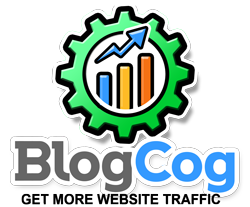
Hreflang Explained: How to Speak Multiple Languages to Google and Boost Your SEO Strategy
Share
Let's get started with clarity and purpose. If you've ever felt lost in the world of international SEO, you're not alone. Understanding hreflang tags is like learning how to speak multiple languages—not just for people, but for Google too. If you’re targeting customers across different regions and languages, hreflang tags are essential in helping Google deliver the right version of your content to the right audience.
Imagine this: You’ve got a beautifully designed website, crafted to perfection, with all your products and services listed in multiple languages. But here's the catch—you want to make sure Google doesn’t get confused and serves the right page to the right region. That’s where hreflang comes in to save the day!
In this post, we’ll break down what hreflang is, why it’s vital for your SEO, and how to use it to tell Google, “Hey, we speak your language!”
What Is Hreflang?
Hreflang is an HTML attribute that tells search engines like Google which language and regional URL to serve to users based on their location and language preferences. Think of it as a linguistic passport for your website. By adding the correct hreflang tags, you're basically saying to Google, “This page is meant for Spanish speakers in Mexico” or “This version is for French speakers in Canada.”
Without hreflang, search engines may struggle to serve the appropriate language or regional version of your content. This confusion can lead to poor user experiences and, ultimately, a loss in rankings.
Why Should You Care About Hreflang?
Now, let’s talk about why you should care about adding hreflang to your website. It’s not just a nice-to-have feature; it’s a must for any business looking to expand internationally. Here’s why:
- Improved User Experience: When Google knows exactly which language to serve your users, they can find the content in their preferred language, making them more likely to engage.
- Prevent Duplicate Content Issues: Without hreflang, Google might think that your pages in different languages are duplicate content, which could harm your SEO.
- Better Search Engine Visibility: By targeting specific regions and languages, you increase your chances of ranking higher in international search results.
- Enhanced Global Reach: If you’re targeting multiple countries, hreflang helps ensure you’re reaching the right people with the right message.
How to Use Hreflang Tags
Now that you know why hreflang is important, let’s get down to the nitty-gritty of how to implement it. There are a few different ways to add hreflang tags to your website:
-
HTML Tag: This is the most straightforward way to implement hreflang. Simply add a
<link rel="alternate" hreflang="x" href="URL" />tag in the section of your webpage. - HTTP Header: If you’re serving content like PDF files, you can use HTTP headers to declare the hreflang attributes.
- XML Sitemap: For larger sites, you can include hreflang tags in your XML sitemap to help Google crawl and understand your content.
Let’s say you have a page in English targeting the US and another in Spanish targeting Mexico. Your hreflang tags would look something like this:
<link rel="alternate" hreflang="en-us" href="https://www.example.com/en-us/" /><link rel="alternate" hreflang="es-mx" href="https://www.example.com/es-mx/" />
Common Hreflang Mistakes to Avoid
Even though hreflang is incredibly useful, many website owners make mistakes when implementing it. Here are a few to watch out for:
- Missing Tags: If you’re not adding hreflang tags to all your pages, Google won’t know which version to serve.
- Incorrect Language or Region Codes: Make sure you’re using the correct language and region codes. If in doubt, refer to the ISO 639-2 codes for language and the ISO 3166 codes for regions.
- Self-referencing Tags: Don’t forget to include hreflang tags for the page itself. You’ll need to add a self-referencing hreflang tag for each page to avoid confusion.
Boost Your SEO with BlogCog
If you want to take your SEO game to the next level and boost your global reach, BlogCog’s AI-driven subscription blogging service can help. With a focus on SEO-optimized content, BlogCog can assist you in creating content that resonates with your audience and gets noticed by Google. Not sure where to start? Get started with BlogCog today!
Final Thoughts on Hreflang
Implementing hreflang tags might seem like a small task, but it can make a world of difference for your international SEO. By using the right tags, you can ensure your content reaches the right people in the right language, improving user experience and boosting your rankings on Google.
If you’re ready to take control of your multilingual SEO strategy, don’t hesitate to get in touch with BlogCog. Our team is here to help you master SEO and grow your business globally.
Related Posts:
- The SEO Challenges of Right-to-Left (RTL) Languages in 2025: Navigating the Digital Maze with Humor and Strategy
- Hreflang Hell: A Practical Guide to Actually Fixing It (Without Losing Your Mind)
- How to Use Unicode Homoglyphs for Global SEO (Without Penalties): A Clever Guide by BlogCog
- Why Google Favors Certain Languages (Even When It Shouldn't): The Hidden SEO Bias Exposed
- How to Optimize for Google's "Translated Search" Queries – Unlock Multilingual Traffic with BlogCog
